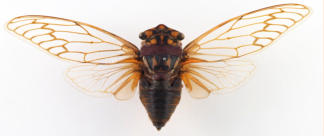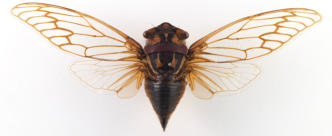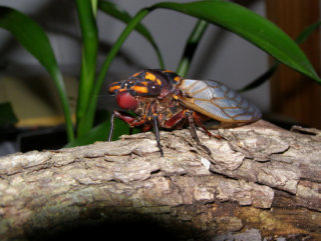Cherrynose
Macrotristria angularis (Germar, 1834)
© Popple Creative Industries 2014–2025






Male
Female
Species number (TNS):
059.
Fore wing length:
46–61 mm.
Distribution and seasonality:
From Cairns in Queensland
south to near Bendigo in Victoria
and west to near Adelaide in
South Australia. Adults usually
appear in November and may
persist up until March or
sometimes April.
Notable localities:
Herberton, Mt Moffatt, Curtis
Island, Kingaroy, Royal National
Park, Beelbangera (F. Sartor),
Upper Snowy River (K. Teml and
E. Schieren).
Habitat:
Dry sclerophyll forest and
eucalypt woodland.
Calling song and behaviour:
A strong whistle, with a
continuous component and a
broken staccato section. Singing
may occur at any time of the day
and typically also occurs at dusk.
Adults sit on the main trunks and
upper branches of eucalypts.
Similar species:
Maranoa Cherrynose, Deafening
Cherrynose, False Cherrynose.




dr-pop.net database record
Currently known extent

Habitat